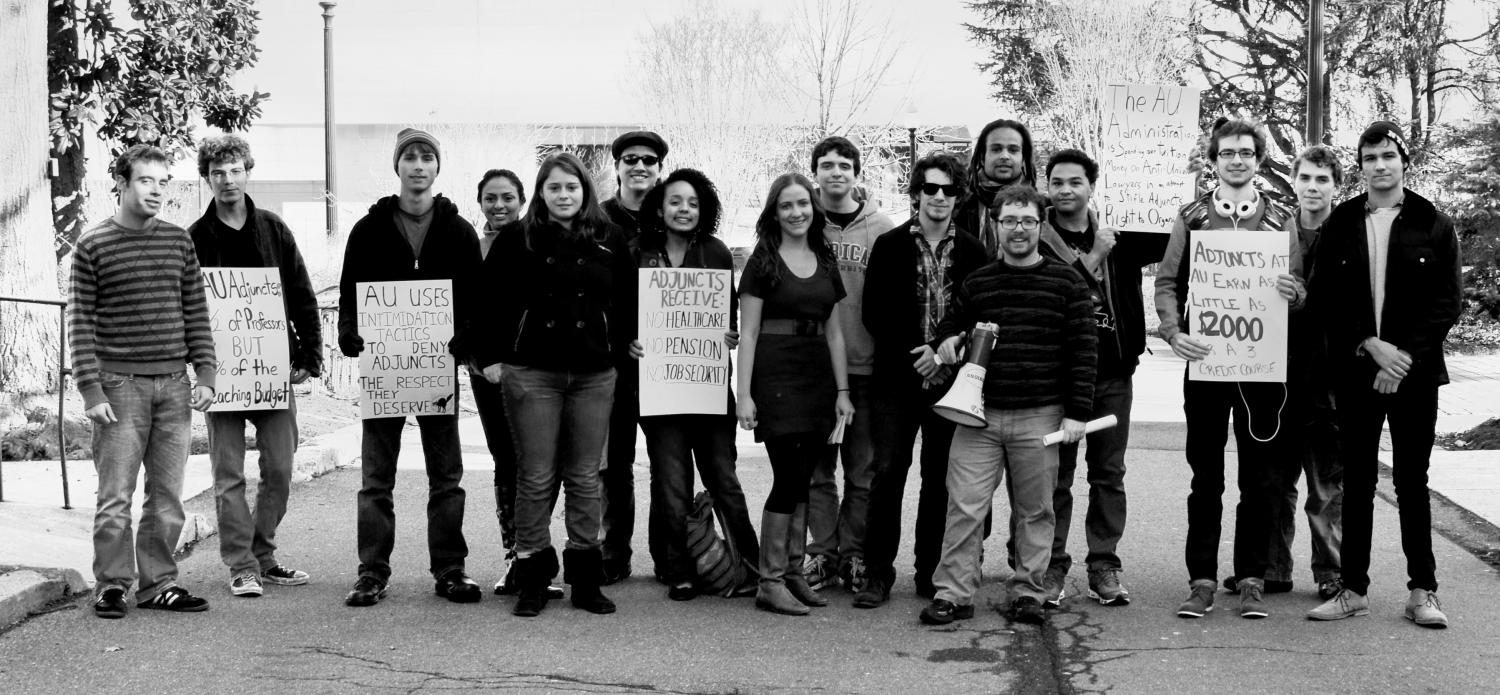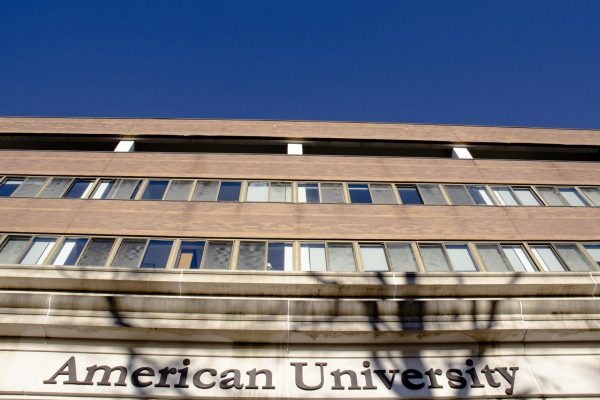Adjuncts Strike Back: AU’s Lowest-Paid Faculty Unionize
With more than 1,600 eligible voters, many of whom no longer teach at the university, the vote came in 379-284, a victory for professors who have been struggling with low pay, no benefits, and no job security. Through the initiative, AU adjuncts became the third school in the DC area to join the Service Employees Local 500, in addition to George Washington University and Montgomery County Community College.
Several student groups and leaders rose in support for the unionization efforts. As part of the Student Worker Alliance, Ethan Miller, author of this article, produced a video where AUSG President Tim McBride endorsed adjunct unionization. The SWA on campus collected over 200 signatures from students and presented the petitions, together with a letter of support, to every department head, the deans of each school and University Provost Scott Bass. Students also held two flashmobs in the week leading up to the vote count, culminating in a demonstration in the provost’s office.
Questions arose whether an increase in adjunct salaries would result in tuition hikes. However, even if adjunct pay doubled, it would still make up less than three percent of the university budget. After the vote, AU administrators agreed to recognize the union and not challenge the election results, alleviating supporters’ concerns over AU’s potential reactions.
Other unionization efforts on campus have encountered far more obstacles. In 2007, the University contested shuttle bus drivers’ efforts to join Teamsters local 922 through extensive legal proceedings. Despite this, shuttle drivers unionized. But in 1996 the university successfully employed suspect tactics to prevent operating engineers from collectivizing. Other workers have unionized successfully, such as janitorial staff and food service staff, personnel employed through Aramark and Bon Appétit, respectively.
While many colleges, especially public institutions, find themselves in a financial bind, American does not. The budget for fiscal year 2012 projects a roughly fifteen percent growth in expenditures when compared to the budget for fiscal year 2011 of $479,200,000. And while the overall budget for adjunct salaries has also grown slightly in the last few years, the hiring of additional adjunct faculty has outpaced such improvements. Salaries for part-time faculty make up less than two percent of the total university budget, while salaries for the top five highest-paid administration figures have soared in the last five years to near $3 million combined. Full-time tenured professors make up to $156,100 a year.
According to The Chronicle of Higher Education, more than forty percent of the professors at AU are adjuncts. Many adjuncts at the university are paid as little as $2,000 per course, receive no health benefits, and retain little job security. However, motivations for collectivization were not simply financial. Many adjuncts feel isolated from the university community. Erik Cooke, an adjunct in the Philosophy and Religion Department, said adjuncts “often feel very marginal to the conversation.” Part-timers, until recently, had held no positions within the Faculty Senate or any other university governance structures.
Adjuncts across the country face difficulties similar to our adjunct professors. A 2010 study on the conditions faced by part-time faculty at two-year and four-year institutions, published by the American Federation of Teachers (AFT), reported that only 28 percent of adjuncts receive health benefits through their colleges and one-third receive less than $2,500 per course. Almost half say they make less than $15,000 annually from teaching.
These conditions have led many to challenge their status through organizations like the New Faculty Majority Foundation, the Coalition of Contingent Academic Labor and the Modern Language Association, all focusing on uniting contingent faculty.
Years ago, the majority of adjunct professors were professionals who taught on the side, a short-term arrangement where teaching was not their primary income. But with full-time, tenure-track positions at colleges and universities increasingly rare, many newly minted PhDs are going straight from graduate school to teaching as adjuncts. Because of this, adjuncts remain qualified, valuable faculty members who receive the short end of the financial stick. Hopefully, unionization will afford adjunct professors the compensation they are undoubtedly due.
Anne McLeer, Director of Research and Strategic Planning for SEIU Local 500, said that by voting to unionize, “American University adjuncts are now joining the many adjunct and contingent faculties across the country who are refusing to allow themselves to be treated as a second tier.”
Photo from USAS.org







